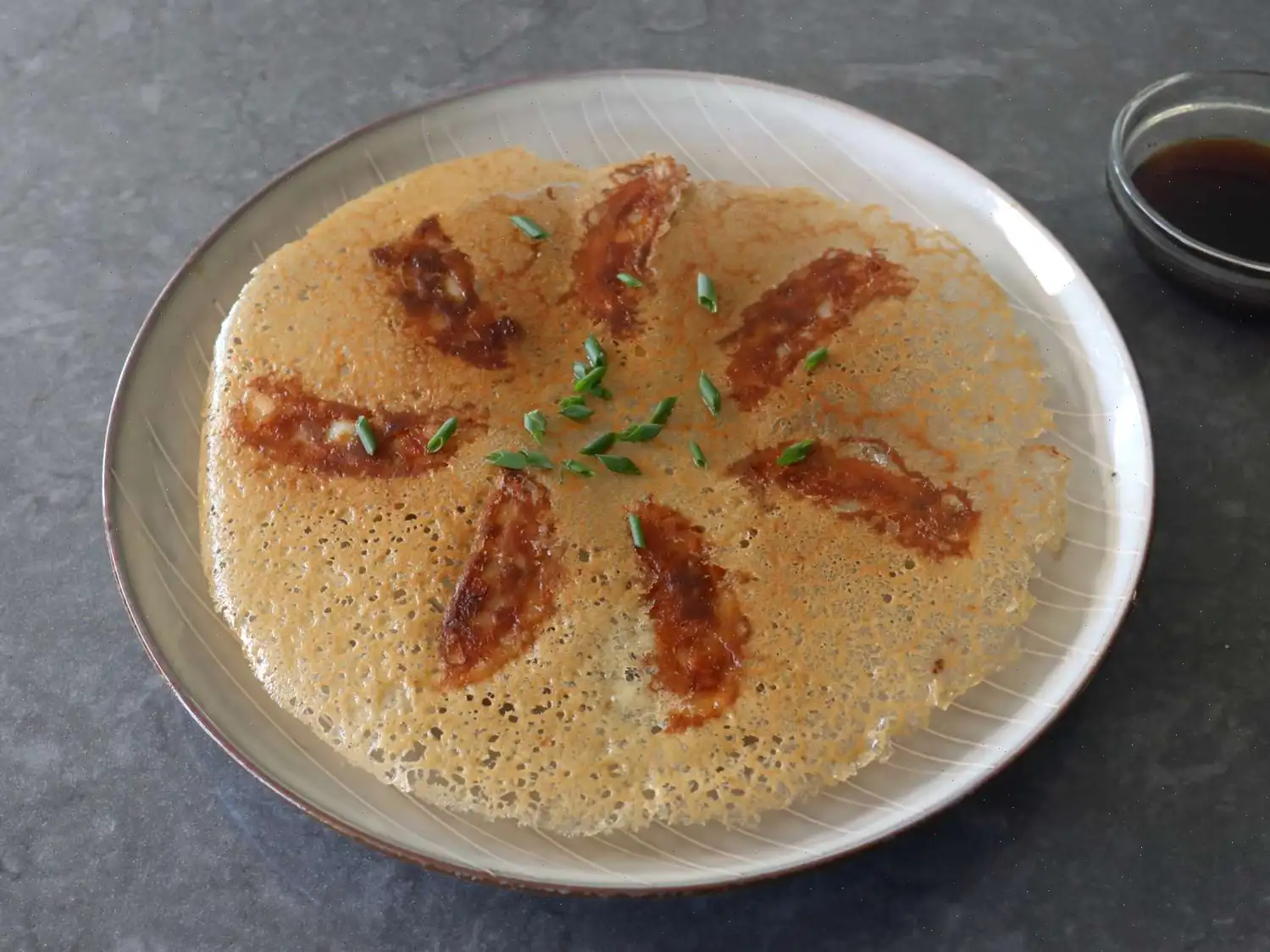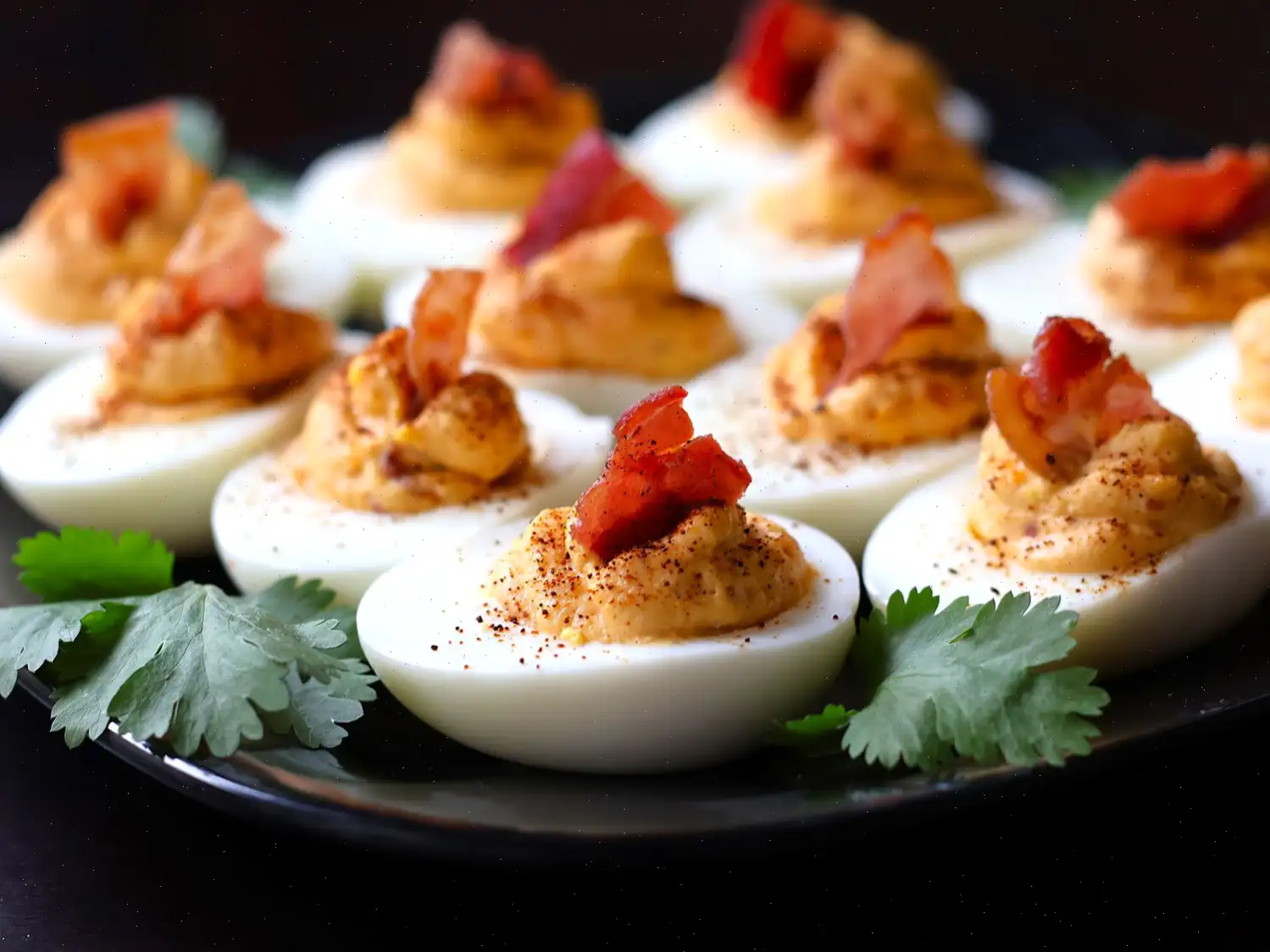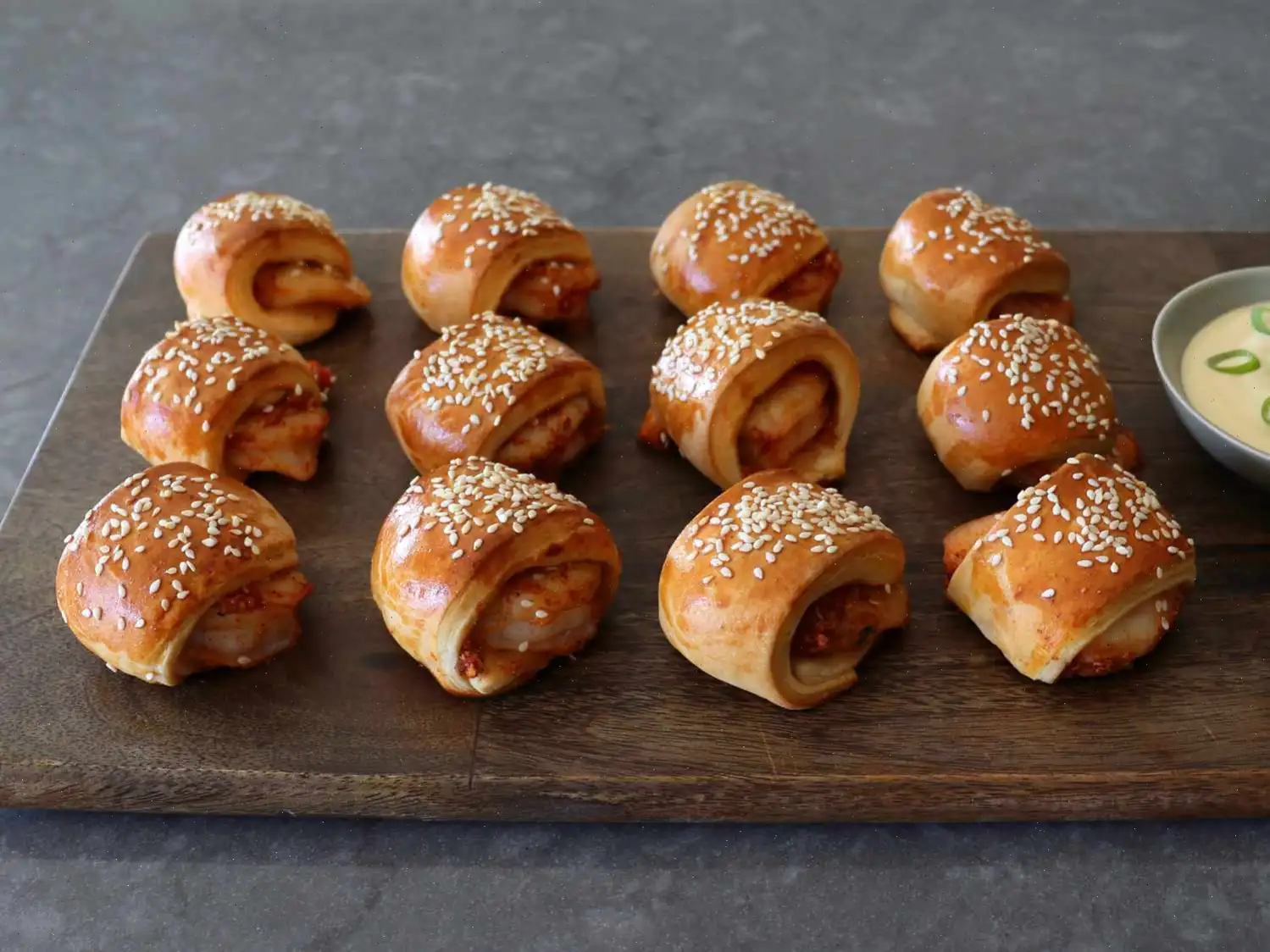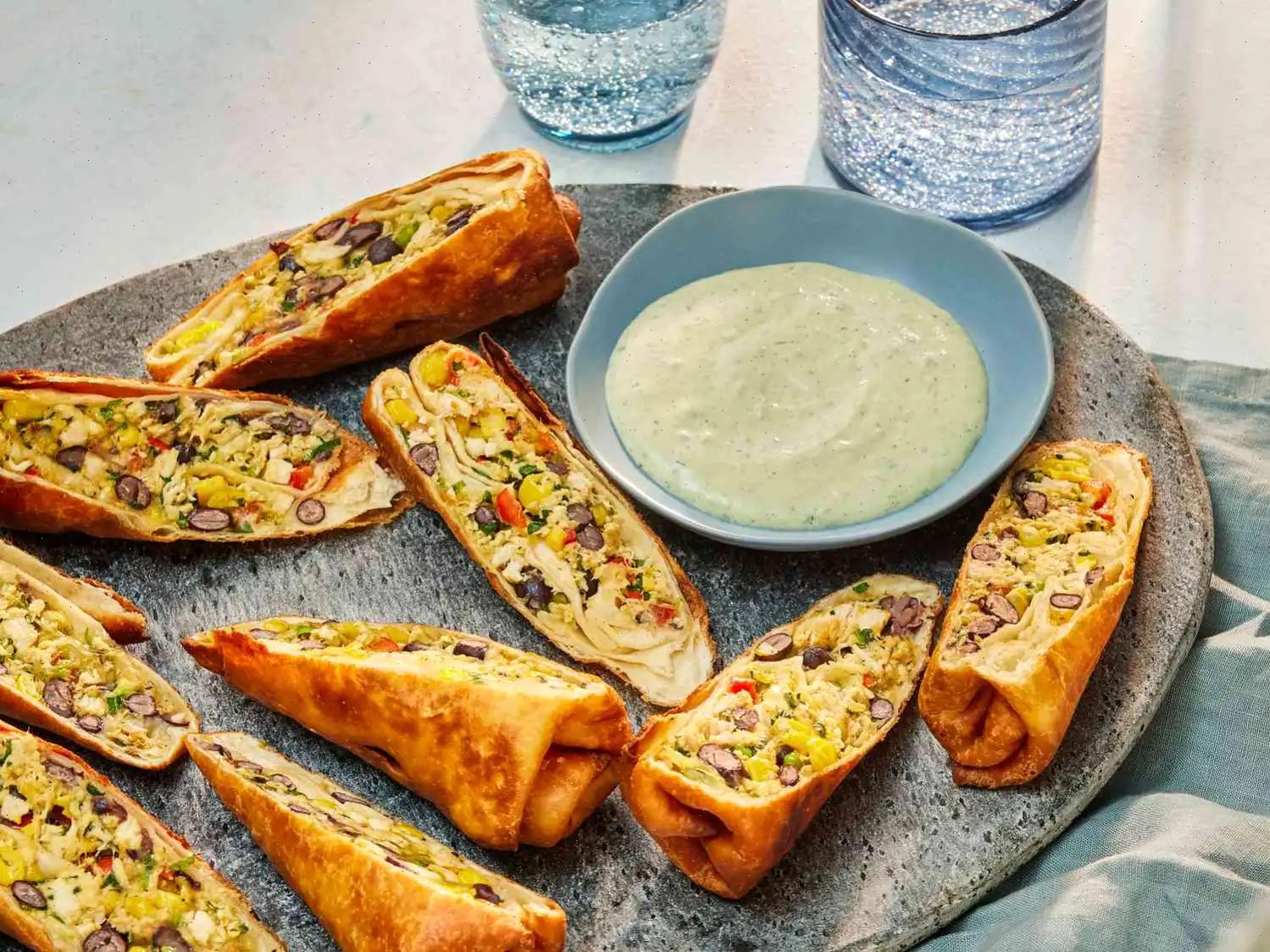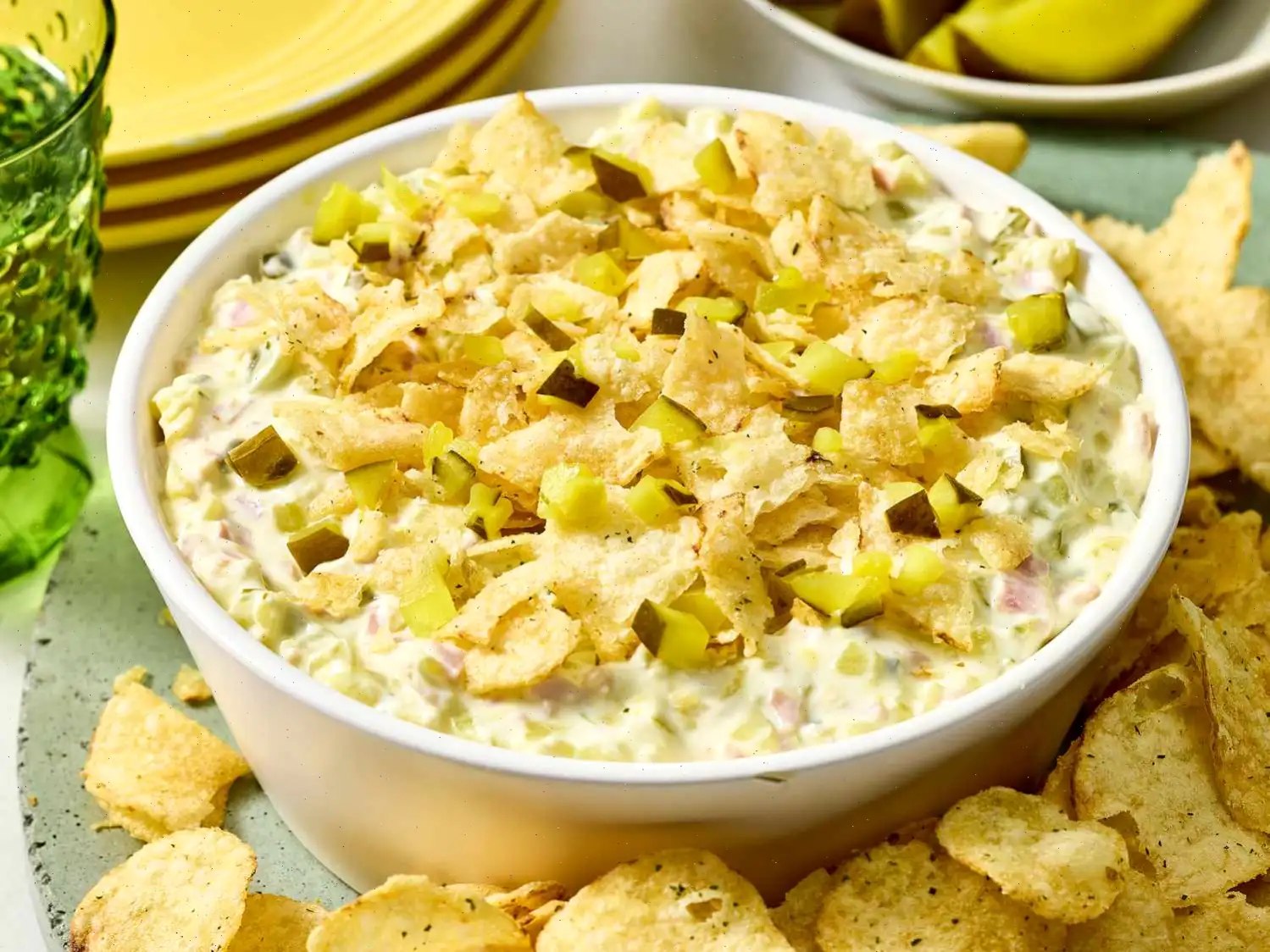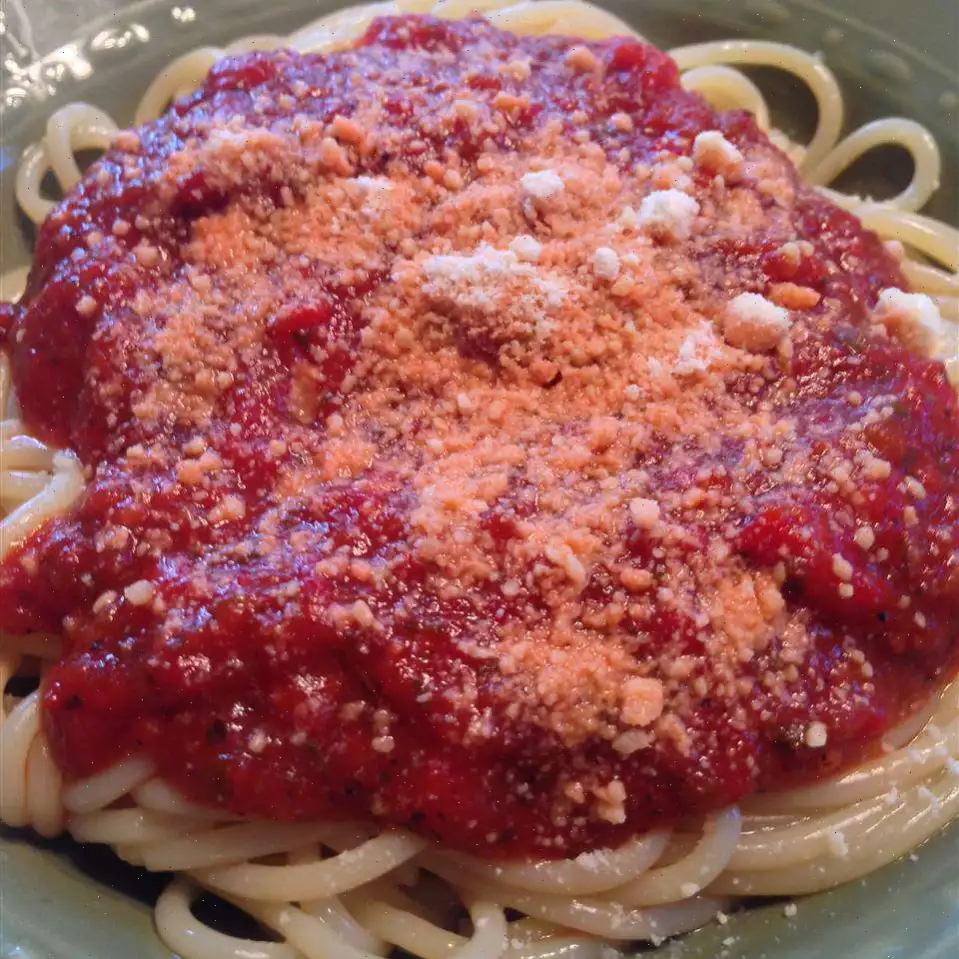
Lace Skirt Dumplings Recipe
Ever since I had these crispy, lace skirt dumplings at a Japanese izakaya-style restaurant called Rintaro in San Francisco, I've been fascinated by them. The gyoza dumplings were good, but it was the impossibly thin, crispy skirt that stole the show. I spent the rest of the evening trying to figure out how they made it, but it wasn't until later that I learned how simple the technique was. Now, I'm hooked on experimenting with other dishes that could use this crispy "lace skirt." But for now, I hope you'll give this recipe a try!
Ingredients:
- 1/3 cup water
- 2 teaspoons all-purpose flour
- 1/8 teaspoon salt
- 4 teaspoons vegetable oil
- 1/4 teaspoon sesame oil
- 7 frozen dumplings or potstickers
Directions:
- Make the Slurry: In a small bowl, thoroughly mix the water, flour, and salt. Set this mixture aside. You can also substitute the water with any flavorful meat or vegetable broth for added depth of flavor.
- Heat the Pan: Add the vegetable oil and sesame oil to a high-quality non-stick pan. Place the pan over medium-high heat and wait until the oil is hot.
- Cook the Dumplings: Arrange the frozen dumplings in the pan with the flat side down, in a circular pattern. Once you hear them start to sizzle, cover the pan tightly and allow them to brown for about 3 minutes.
- Add the Slurry: Uncover the pan, whisk the slurry you prepared earlier, and pour it around the dumplings. Reduce the heat to medium, and let it cook until the moisture from the slurry evaporates and the "lace skirt" begins to form and brown.
- Finish Cooking: Continue cooking until the skirt is crisp and you can see it moving across the bottom of the pan when you gently shake it. The skirt should pull up from the edges and easily release from the pan. If its stuck, carefully use a spatula to loosen it from the edges. Once the skirt is fully crisp, remove the pan from heat.
- Flip the Dumplings: Place a plate over the dumplings and carefully flip them over. Be mindful of hot oil dripping as you do this, and try to do it over a towel to catch any splashes. This step is best done carefully to avoid burns.
- Serve: Serve your crispy, lace-skirt dumplings immediately with your favorite dipping sauce, such as a classic dumpling or wonton sauce. Enjoy!
Nutrition Facts (per serving):
| Calories | 778 |
| Total Fat | 33g |
| Saturated Fat | 5g |
| Cholesterol | 9mg |
| Sodium | 2424mg |
| Total Carbohydrate | 104g |
| Dietary Fiber | 3g |
| Total Sugars | 4g |
| Protein | 16g |
| Vitamin C | 1mg |
| Calcium | 667mg |
| Iron | 3mg |
| Potassium | 319mg |
Note: The nutritional values are based on a 2,000 calorie diet. Your daily values may vary depending on your individual needs.
The Fascinating Story Behind Lace Skirt Dumplings
Lace skirt dumplings, also known as "Hanetsuki Gyoza" in Japanese, are a modern twist on traditional pan-fried dumplings. Their origin traces back to Japan, where chefs began experimenting with a crispy, golden lattice of starch that forms around the dumplings during cooking. This technique elevates the humble dumpling from a simple comfort food to a visually striking dish that delights both the eyes and the palate. The idea is believed to have emerged in izakaya-style restaurants in the 20th century, where presentation and texture were as important as flavor.
Regional Characteristics
While gyoza are enjoyed across Japan, lace skirt dumplings are particularly popular in urban areas such as Tokyo and Osaka. These regions emphasize creativity and aesthetic appeal in everyday cuisine. The hallmark of this version is the delicate, lacy crust that forms at the base, achieved by adding a thin slurry of flour and water during the pan-frying process. This technique gives the dumplings a unique crunch that contrasts beautifully with their soft, juicy interior.
What Sets Them Apart from Similar Dishes
Unlike regular gyoza or potstickers, which are simply pan-fried until the bottom is brown and crisp, lace skirt dumplings feature an intricate, skirt-like pattern that extends around each dumpling. This not only enhances texture but also adds a visual flourish that makes the dish instantly recognizable. While other dumplings might rely solely on sauces for flavor, lace skirt dumplings combine a crisp, buttery edge with tender filling, offering a more dynamic eating experience.
Typical Settings for Serving
Lace skirt dumplings are versatile and can be served in both casual and formal settings. They are often found in izakayas, Japanese pubs, and specialty gyoza restaurants, where they are presented as a shared appetizer. However, they have also become popular in home kitchens and international restaurants that focus on Asian fusion cuisine. Their striking presentation makes them ideal for dinner parties or any occasion where a touch of culinary artistry is desired.
Interesting Facts
- The term "lace skirt" refers to the delicate, web-like crust that forms when flour slurry is added during cooking.
- Creating the perfect skirt requires precise heat control and a non-stick pan; too high heat will burn the edges, while too low will prevent the skirt from forming.
- Though originally made with pork and cabbage filling, modern variations include shrimp, chicken, or vegetarian options.
- This technique can be adapted to other pan-fried foods, such as ravioli or even small pancakes, inspiring chefs to experiment beyond traditional dumplings.
- The crispy skirt is not just decorativeit adds a contrasting texture that elevates the flavor profile of each bite.


